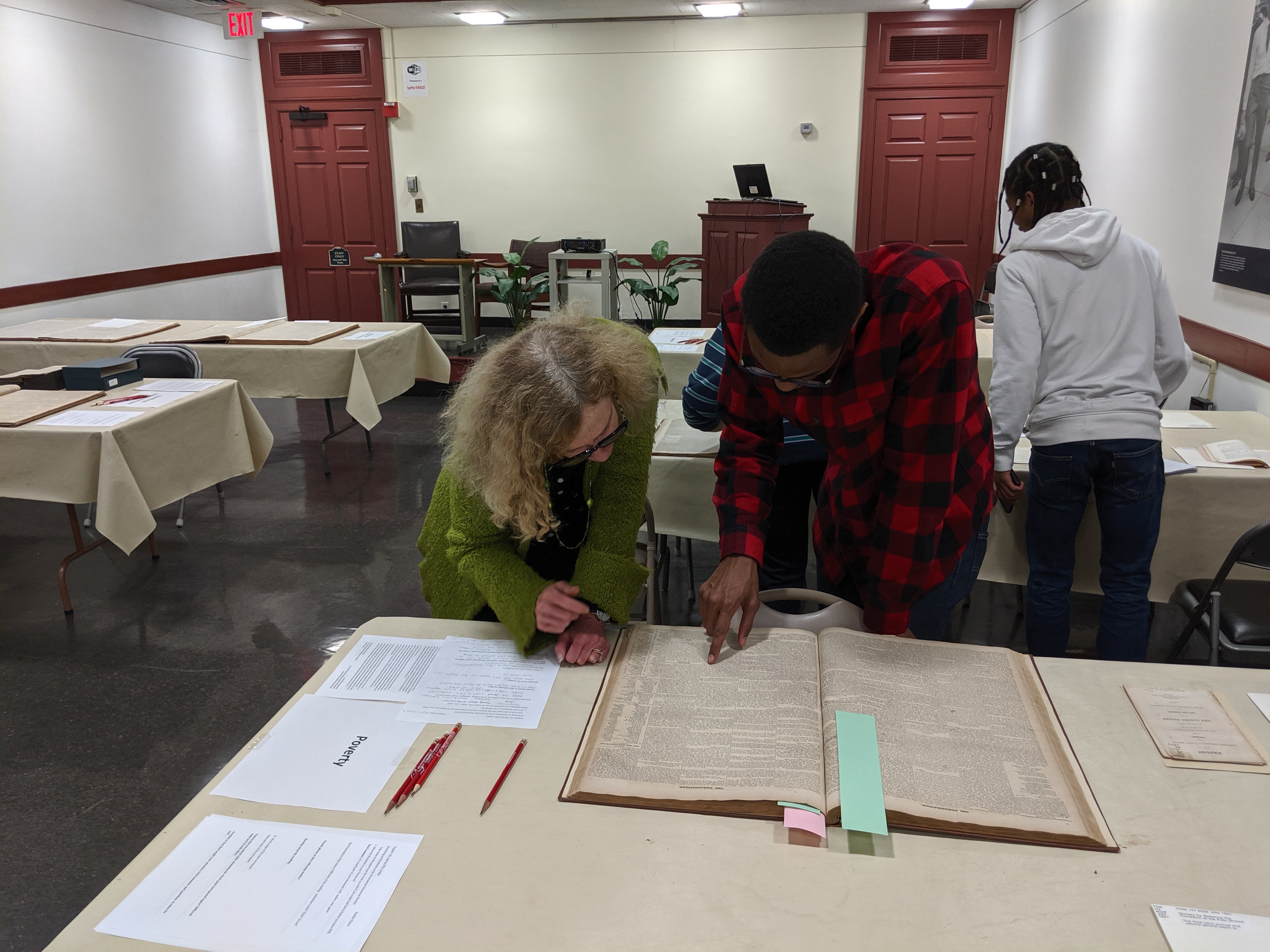--by Cindy Giddle, CCP English Professor
There are so many important reasons for students to be introduced to archives, such as those at the Presbyterian Historical Society. My own English 102 students in Spring 2020 were very excited to have the opportunity to visit and use historical resources, especially ones curated and culled for them, in their research about Philadelphia.
Here are three of the most important reasons for students to have access—especially well-organized and friendly access—to archives:
1) Giving students a concrete (brick and mortar) sense of the organization of documents. More and more students have never routinely visited a library to read magazines or check out books, yet most academic databases and websites in some way mirror the organization of libraries and their catalogs. To navigate a database, it is extremely important to have a sense of the physical organization of materials that the database mimics. As my students walked around the underground shelves of PHS, with archivists explaining their organization, they began to understand better the concept of any virtual archive/database through a physical analog.
2) Including students in the community of scholars in Philadelphia, and welcoming and inviting them to participate in the study of the city and the Presbyterian Church. CCP students (like all of us) are reluctant to enter unfamiliar spaces and have not often been encouraged to think of themselves as scholar-researchers. The beautiful study areas of PHS and the warmth of the staff give students confidence to return to study, as well as to visit other local libraries and cultural institutions. It is so important that students know that academic institutions are available to them.

3) Besides the real value of students entering and visiting PHS, there is, even more importantly, the wonder and excitement of reading and analyzing documents available there. Many students simply could not believe that they were reading “real” newspapers and pamphlets from the 1820s. They all experienced the heady sense of time travel—that these documents were first read by people 200 years ago—and unfamiliarity. In our visit to PHS, all the students—in different topic groups—looked at pages of newspapers that were crowded with texts and advertisements that represented a very different city.
Many students simply could not believe that they were reading “real” newspapers and pamphlets from the 1820s.
One group that was looking at documents about incarceration in Philadelphia in the 1830s also had a giant key from Moyamensing Prison as part of their archive “set.” The size and weight of the key opened a vision of a very different prison system. Another group looking at the nativist riots in the 1840s had to figure out that “native American” in their pamphlets meant “white protestants, not Catholics” rather than indigenous people. All of these corrections to the uniform sense of “back in the day” add depth and texture to their sense of history.
